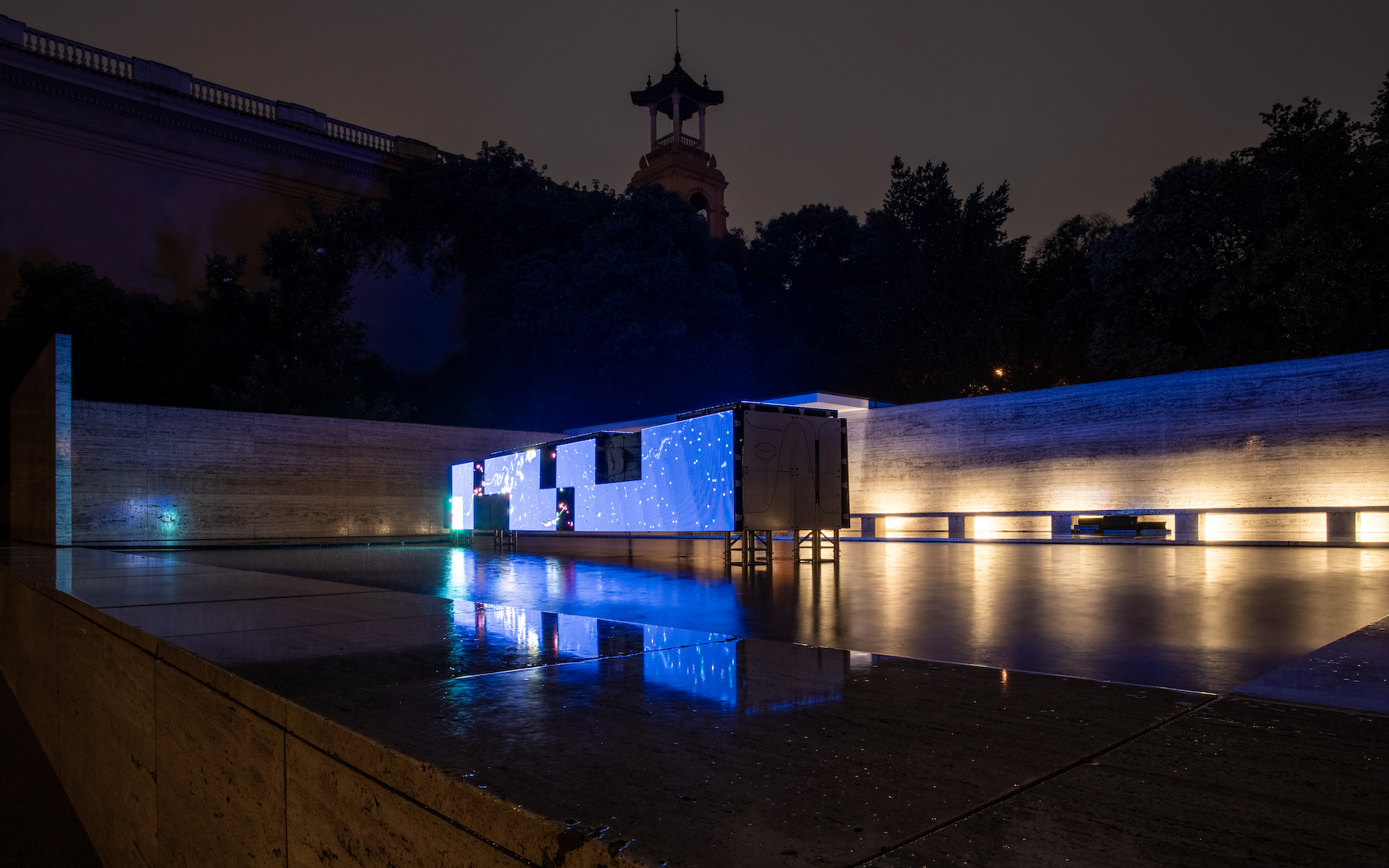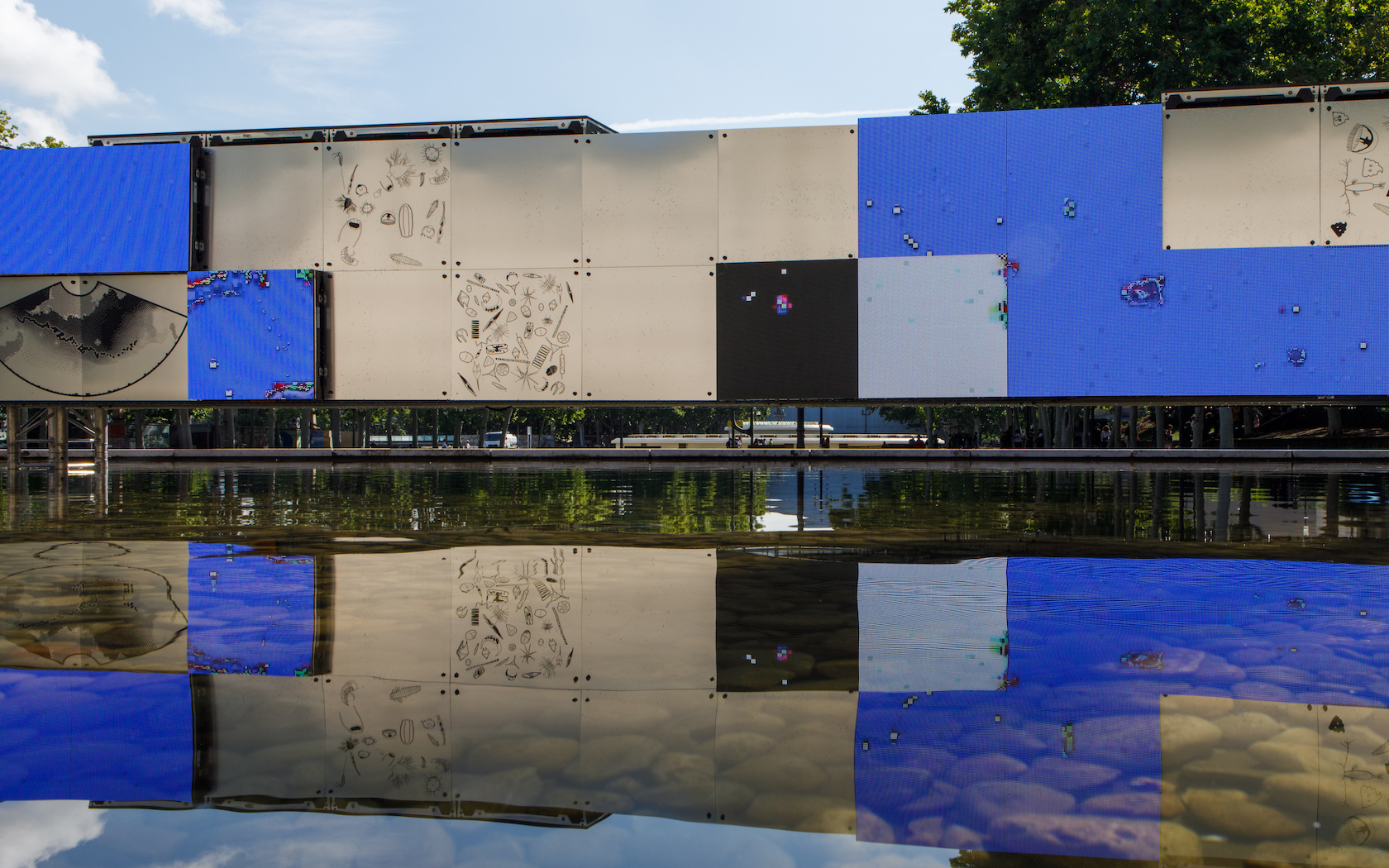Liquid Strata is an installation that will be on view at the Mies van der Rohe Pavilion as part of the Sónar festival and explores how art and science can dialogue to show us the depths of the ocean.
We know that stories can be told through art, and that many of these stories highlight social issues. This is how art becomes a powerful tool to approach other fields and make them dialogue with your sensibility. How do the two disciplines feed off each other? We talked about it with Joan Llort, oceanographer at the Barcelona Supercomputing Center and co-creator of Liquid Strata, an installation that can be visited in the Mies van der Rohe Pavilion as part of the Sónar festival.
Liquid Strata is a clear example of how science and art can go hand in hand, and how this symbiosis often results in projects where beauty manifests itself in various forms. We observe it in the aesthetics of the artistic installation, but also in the functioning of the marine ecosystem.
The work has been created by the art collective Entangled Others Studio (Sofía Crespo and Feileacan McCormick), together with artist Daphne Xanthopoulou and oceanographer Joan Llort. Together they use bold and innovative use of scientific data to reveal the dynamics that occur in the hidden layers of the mesopelagic world, also known as the twilight zone. This is an oceanic layer where light is scarce and which is located at a depth of between 200 and 1000 metres.

Editorial credit: Anna Mas.
Liquid Strata is a site-specific installation in the outdoor pond of the Mies Pavilion that tells us about that world where light barely penetrates. It is the largest marine ecosystem on the planet. It is home to millions of tiny sea creatures that migrate to the surface every night to feed.
How did you come up with the idea for Liquid Strata?
I came up with the idea of collaborating with artists, not the idea of the work you see here. I wanted to talk about the mesopelagic to society, because it is something we are researching. On the one hand it seemed to me a very interesting topic and on the other hand it has a social component, because as a society we can decide whether or not we want to exploit an ecosystem that is still intact. It seemed interesting to me to bring this debate outside the academy, and it is very difficult to do it with purely scientific means. This is where I think artists can help, because art provides tools that may not be rigorous and logical, but they do appeal to the emotions and lead you to imaginaries that allow you to talk about this ecosystem.
The installation explores the Twilight Zone, which helps absorb atmospheric CO2. How can we help preserve it?
For me there are two things: the first is to understand that the ocean is part of our lives. Even if you live far away from it, it contributes to the earth’s carbon cycle and thanks to it climate change is much less severe than it would be if the ocean had not absorbed this CO2. This comes at the cost of changes in ocean acidification and temperature that are affecting ecosystems a lot.
I wanted to talk about the mesopelagic to society, because it is something we are investigating.
On the other hand, there is the exploitation of this resource. The mesopelagic is composed of very small, gelatinous fish that are not good for human consumption. However, the industry has thought that they can be good for making fishmeal in fish farms. This is the same industry that supplies most of the fish we buy, and they do it at the expense of the small-scale fishermen, who are disappearing. There are no young people going to sea.

Editorial credit: Anna Mas.
Here I see something very easy: when we go to buy fish, ask ourselves where it comes from. Is it a seasonal fish? Is it a local fish? Maybe we don’t need to eat salmon, but eat the fish that our grandparents ate, which was smaller and caught in the Mediterranean. It is much more important to have fishermen on our coasts, not only for the economic impact but also for the cultural value. We have a culture very much linked to the sea and we are losing all these cultural factors.
Thanks to the ocean, climate change is much less strong than it would be if the ocean had not absorbed this CO2.
As an expert in data processing to study atmosphere-ocean interactions, what can you tell us?
I really like working on atmosphere-ocean interactions, because it forces you to work with other people: physicists, biologists, atmospheric people… It is in these atmosphere-ocean interactions that cycles occur.
To give you an example, one of the lines of work we have here at the Barcelona Supercomputing Center is fires. Forest fires emit a lot of particles that contain nutrients. What we have seen is that in some cases, when there are very strong fires, these ashes fall into the sea and this promotes the growth of the plants that live there. This is a complex system that shows us that fires are neither good nor bad; it is something that is part of ecosystems and where the terrestrial ecosystem is perfectly connected with the marine ecosystem.

Editorial credit: Anna Mas.
I guess having the support of the Mies van der Rohe Pavilion and Sónar has been very rewarding. How has the collaboration gone?
There are several layers of collaboration. It’s lucky to be able to do it here, at Sónar and at the Mies van der Rohe. It’s a luck and at the same time a responsibility because the Mies is a very special space that you have to respect from a historical and also a practical point of view; you can’t necklace things, for example. So there are a lot of rules you have to adapt to. And something similar happens with Sónar, which for me is one of the most interesting festivals in this city and in a large part of Europe. But like any great festival, it is conditioned by rules and timings that make it important.
It is both a good fortune and a responsibility to be able to do it here, at Sónar and at the Mies van der Rohe.
The artists’ part has perhaps been the most pleasant because I’ve been lucky enough to find artists with whom we’ve connected in a very easy way. Also because they work in a very scientific way. For example, they develop their own Artificial Intelligence algorithms.
They have a very similar process to ours, even if the end sometimes is not the same, added to the curiosity they have for the natural environment.
Perhaps the difficult thing has been to land the idea, but the beautiful thing is that this work is not definitive: the intention is that it will be transformed, that it will be an interaction with the initial idea, and that we can explore other aspects that perhaps we haven’t been able to do here.
Apart from the fact that it is nice to think that the work can be represented in multiple ways, this gesture also appeals to a certain artistic sustainability: all the work we have done up to now can be used and visualised in other ways.
The nice thing is that this work is not definitive: the intention is that it will gradually transform and interact with the initial idea.
___
Liquid Strata is a project curated by Lluís Nacenta. It can be visited until 15 June from 10am to 10pm.
Joan Llort is a researcher at the Barcelona Supercomputing Center-Centro Nacional de Supercomputación (BSC-CNS). He is a biogeochemical oceanographer, dedicated to understanding the links between the blue ocean (temperature, salinity, density, currents) and the green ocean (plankton, organic matter, bacteria, fish).
He has worked with renowned artists such as Sofía Crespo, Entangled Others and Tarta Relena, and has participated in festivals such as Sónar, Eufonic, Kosmopolis-CCCB or PUBLICA2. Liquid Strata refers to his current research at the BSC.




